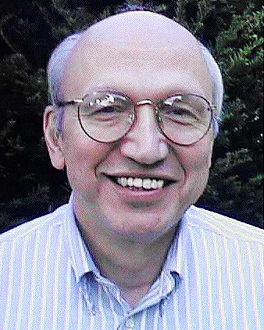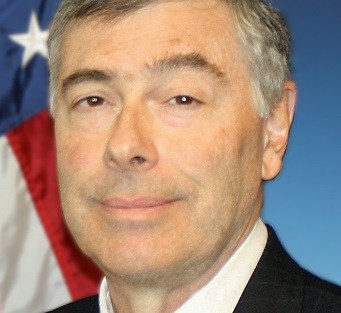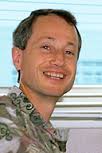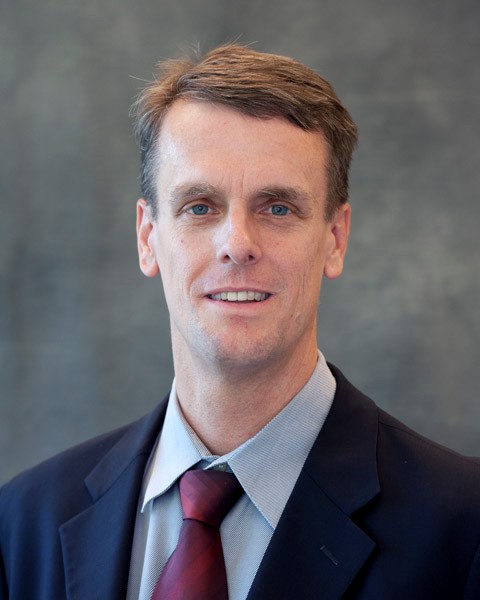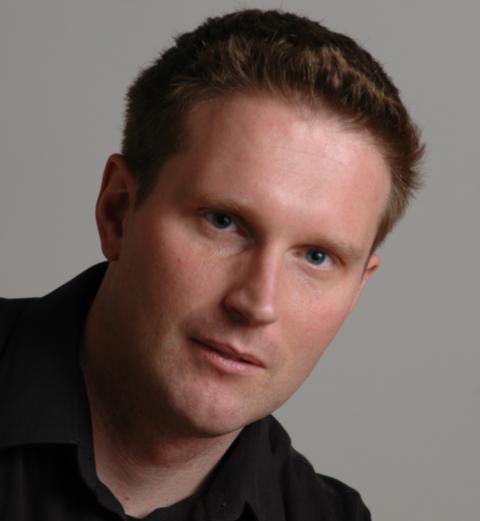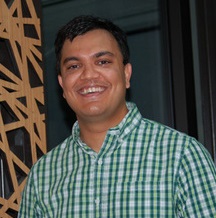Abstracts and Bios
The Role of High Frequency Switching in the Control of Markov Processes
Its wide range of applications, together with the relative tractability of the subject, has made the control of Markov processes a popular topic. The optimal control for problems in which certain elements of the transition matrix (the infinitesimal generator in continuous time) are adjustable in real time, and for which the state is perfectly observable, is understood in considerable detail. However, for a subset of such problems there is a least upper bound on the performance that can be approached through ever-higher frequency switching but never achieved. The limiting trajectory in such cases is not generated by an ordinary chattering control but rather by large amplitude Lie bracketing, with each cycle generating an infinitesimal area. Our recent work gives conditions under which this behavior does and does not occur. Examples include the solution of a problem involving the evaluation of the free energy of a thermodynamic system.
Roger Brockett's contributions to control theory and applied mathematics include early work on frequency domain stability theory, differential geometric methods in nonlinear control, the computation of Volterra series, a geometric approach to the sufficient statistics problem in nonlinear estimation, stabilization questions, robot kinematics and dynamics, formal languages for motion control, hybrid systems, computational problems related to tensor ranking and integrable systems, quantum control, and optimal control of Markov processes. His research and teaching has been recognized with awards from IEEE, ASME, SIAM and AACC. He is a fellow of IEEE, SIAM and AMS and a member of the National Academy of Engineering. As a Harvard faculty member he served on the faculty council for several years, initiated long standing introductory level courses in design and developed major funding for group efforts in robotics and computer vision. He retired from the regular faculty in 2012 after nearly 50 years of lecturing and having served as the major advisor of more than 60 Ph.D. students at Harvard, MIT and Brandeis. His 1970 textbook on linear systems has recently been reprinted in the SIAM Classic Series.
Generalized Synchronization Trees for the Compositional Modeling of Hybrid Systems
This work develops a generalized theory of synchronization trees. In their original formulation, synchronization trees modeled the behavior of nondeterministic discrete-time reactive systems and served as the foundational theory upon which process algebra in the computer science literature was based. In this work, a more general notion of tree is proposed that is intended to support the modeling of systems with a variety of notions of time, including continuous and hybrid versions. (Bi)simulation is also studied, and it is shown that two notions that coincide in the discrete setting yield different relations in the generalized framework. A parallel composition operator for generalized trees is defined as a means of demonstrating the support for compositionality of heterogeneous systems that the new framework affords. (Joint work with James Ferlez and Rance Cleaveland)
Steve Marcus received the B.A. degree in electrical engineering and mathematics from Rice University in 1971 and the S.M. and Ph.D. degrees in electrical engineering from the Massachusetts Institute of Technology in 1972 and 1975, respectively. From 1975 to 1991, he was with the Department of Electrical and Computer Engineering at the University of Texas at Austin, where he was the L.B. (Preach) Meaders Professor in Engineering. In 1991, he joined the University of Maryland, College Park, as Professor in the Electrical and Computer Engineering Department and the Institute for Systems Research. He has been Director of the Institute for Systems Research, Chair of the Electrical and Computer Engineering Department, and Interim Associate Provost for Faculty Affairs. His research contributions have been in the areas of stochastic and adaptive control, nonlinear estimation using algebraic and geometric methods, modeling and analysis of stochastic differential equations driven by semimartingales, decentralized control, hybrid systems, discrete event systems, nonlinear systems, and simulation-based optimization. He is a fellow of IEEE and SIAM.
Perspectives on Control Theory and Systems Engineering
This talk will discuss perspectives on the utility of control theory for addressing large scale systems engineering problems. An important national defense problem will be described. The role of control theory in providing a structure as well as specific algorithms for its solution will be presented. The approach will be historical, following the intertwined careers of the author and Prof. Willsky.
Nils Sandell joined DARPA in 2013 as Strategic Technology (STO) Director. Previously, he was an independent consultant to DARPA on information technology and sensors. His research interests include signal and image processing, computer networks, intelligence, surveillance and reconnaissance, intelligent systems, cyber operations, and battle management, command, control and communications. From 2004 to 2010, Nils was vice president and general manager of BAE Systems Advanced Information Technologies (AIT). He served 25 years as president and chief executive officer of ALPHATECH, Inc., a company he cofounded (later purchased by BAE Systems and renamed AIT). Nils holds a Ph.D. and S.M. from MIT and a B.E.E. from the University of Minnesota.
A revisited vision of system Diagnostics and Health Monitoring: A tribute to Alan Willsky
Alan Willsky made in the late 70's most important contributions to Failure Detection and Isolation. It can be said that Alan's concepts and approaches paved the way to FDI as addressed by the control community since then. Some recent facts and moves in several industrial sectors have led to an increasing importance of this topic, seen as part of maintenance services. At the same time, the systems considered can no longer be described by a handful of mathematical equations. Real-life Simulink and Modelica models may involve several thousands (or even several tens of thousands) of equations and variables. This drastically changes the way Alan's concepts should be handled. It turns out that scaling up requires using concepts from computer science (in addition to control concepts). In my talk I shall review the issues and propose some new approaches.
Albert Benveniste was born in 1949. He graduated in 1971 from Ecole des Mines de Paris. He performed his These d'Etat in Mathematics, probability theory, in 1975, under the supervision of Paul-Andréeyer. From 1976 to 1979 he was associate professor in mathematics at Universite de Rennes I. From 1979 to 2014 he has been Directeur de Recherche at INRIA, where he is now an emeritus. In 1980 Albert Benveniste was co-winner of the IEEE Trans. on Automatic Control Best Transaction Paper Award for his paper on blind deconvolution in data communications. In 1990 he received the CNRS silver medal, in 1991 he has been elected IEEE fellow, and in 2013 he has been elected IFAC Fellow. In 2008 he was winner of the Grand Prix France Telecom of the french Academy of Sciences. From 1994 to 1996 he has been Directeur Scientifique (Senior Chief Scientist) at Inria. From 1997 to 2001, he has been chairman of the "software chapter" of the RNRT funding programme of the french ministeries for research and telecommunications, for telecommunications (Reseau National de la Recherche en Telecommunications). Since 1997, he has been responsible for INRIA of the joint Alcatel-INRIA research programme and is now chief scientist of the joint Bell Labs-INRIA research lab. He is member of the scientific board of INRIA, in charge of embedded systems area. He has been member of the advisory board of T-Source, a venture capitalist specialist in seed capital for the telecommunications sector. He is a member of the scientific advisory boards of Safran Group and Orange. From June 2011 to March 2014, he was co-heading the Center of Excellence (Labex) CominLabs in the area of telecommunications and Information systems. He has been elected to the Acadée des Technologies in december 2011.
My Journey from Stochastic Systems Modeler to MBS Portfolio Manager
Most homeowners know about mortgages. Mortgage backed securities (MBS) are simply many mortgages lumped together for onward sale. For the purposes of valuation and risk management, MBS are extremely challenging to model. The key is to characterize borrowers. propensity to refinance, move, or default as a function of interest rates, home prices, and the availability of credit. The stakes in this valuation problem are high, since MBS comprise a $5 trillion fixed-income market that is second only to US Treasuries in size, depth and liquidity. For the past 17 years, I have been part of the team at Fidelity Investments that manages MBS. For the first five years, I led the modeling effort and for the past twelve, I have led the portfolio-management effort. In this talk, I will outline the many challenges my team faces, and the value that my LIDS training brings to bear in this effort.
Bill Irving is a portfolio manager in the Fixed Income division at Fidelity Management & Research Company (FMRCo). In this role, he serves as lead manager of a number of funds, including Fidelity Inflation-Protected Bond Fund, Fidelity GNMA Fund, Fidelity Government Income Fund, Fidelity Advisor Mortgage Securities Fund, and Fidelity Mortgage Backed Securities Central Fund. Before becoming a portfolio manager in 2004, he was a quantitative analyst in the Fixed Income division from 1999-2004. In that role, he built Fidelity.s valuation model for mortgage-backed securities.
Before joining Fidelity, he was a senior member of the technical staff at Alphatech in Burlington, Massachusetts from 1995 to 1999. Before that, he was a member of the technical staff at MIT Lincoln Laboratory in Lexington, Massachusetts from 1987 to 1995. At both Alphatech and Lincoln Laboratory, his research focused on developing algorithms for automatic target recognition for battlefield surveillance. In 1996, he also served as a lecturer at MIT, teaching Alan Willsky.s recursive estimation course, 6.433.
In both 2011 and 2014, Morningstar nominated Bill for bond manager of the year, though he did not actually win the award either time. In 2009, he testified in front of the US Senate on the role played by asset securitization in the 2008 financial crisis. He occasionally appears on CNBC and Bloomberg radio and television to share his market views.
Bill earned his SB, SM and PhD degrees in electrical engineering, all from MIT, in 1987, 1991 and 1995, respectively.
Computing marginals for Markov random fields: Stochastic approximation with non-asymptotic guarantees
A frequent challenge in statistical inference is the (approximate) computation of marginals and likelihoods for high-dimensional densities. Such problems are well-known to be computationally intractable in the general setting, and are especially challenging in the case of continuous-valued random variables. In this talk, we consider the problem of computing marginals and likelihoods for densities described by an undirected graphical models. We describe an approximate message-passing algorithm, based on a combination of orthogonal function expansion and stochastic
approximation. Under mild conditions, we establish convergence and provide a non-asymptotic bound on the number of arithmetic operations required to obtain a given accuracy of the marginals.
Martin Wainwright is currently a professor at University of California at Berkeley, with a joint appointment between the Department of Statistics and the Department of Electrical Engineering and Computer Sciences (EECS). He received a Bachelor's degree in Mathematics from University of Waterloo, Canada, and Ph.D. degree in EECS from Massachusetts Institute of Technology (MIT). His research interests include high-dimensional statistics, information theory, statistical machine learning, and optimization theory. He has been awarded an Alfred P. Sloan Foundation Fellowship (2005), Best Paper Awards from the IEEE Signal Processing Society (2008), and IEEE Communications Society (2010); the Joint Paper Prize (2012) from IEEE Information Theory and Communication Societies; a Medallion Lectureship (2013) from the Institute of Mathematical Statistics; a Section Lecturer at the International Congress of Mathematicians (2014); and the COPSS Presidents' Award (2014) from the Joint Statistical Societies.
Structured Representations for Scalable Bayesian Dynamic Modeling
Data streams of increasing complexity and scale are being collected in a variety of fields ranging from neuroscience, genomics, and environmental monitoring to e-commerce. The result is a new challenge of how to analyze these massive collections of time series. In particular, one interest is in understanding the intricate and possibly evolving relationships between the series. For scalability, it is crucial to discover and exploit sparse dependencies between the data streams. Such representational structures for independent data sources have been studied extensively, but have received limited attention in the context of time series. In this talk, we present a series of Bayesian models for capturing such sparse dependencies via clustering, graphical models, and low-dimensional embeddings of time series. We will also provide some insights into computational methods for performing efficient inference in large-scale time series. We explore these methods in a variety of applications, including house price modeling, inferring networks in the brain, and segmenting massive human chromatin sequences.
Emily Fox is currently the Amazon Professor of Machine Learning in the Statistics Department at the University of Washington. She received a S.B. in 2004 and Ph.D. in 2009 from the Department of Electrical Engineering and Computer Science at MIT. She has been awarded a Sloan Research Fellowship (2015), an ONR Young Investigator award (2015), an NSF CAREER award (2014), the Leonard J. Savage Thesis Award in Applied Methodology (2009), and the MIT EECS Jin-Au Kong Outstanding Doctoral Thesis Prize (2009). Her research interests are in large-scale Bayesian dynamic modeling and computations.
Relative Entropy Relaxations for Signomial Optimization
Due to its favorable analytical properties, the relative entropy function plays a prominent role in a variety of contexts in information theory and in statistics. In this talk, I'll discuss some of the beneficial computational properties of this function by describing a class of relative-entropy-based convex relaxations for obtaining bounds on signomials programs (SPs), which arise commonly in many problem domains. SPs are non-convex in general, and families of NP-hard problems can be reduced to SPs. By appealing to representation theorems from real algebraic geometry, we show that sequences of bounds obtained by solving increasingly larger relative entropy programs converge to the global optima for broad classes of SPs. The central idea underlying our approach is a connection between the relative entropy function and efficient proofs of nonnegativity via the arithmetic-geometric-mean inequality. (Joint work with Parikshit Shah.)
Venkat Chandrasekaran is an Assistant Professor at Caltech in Computing and Mathematical Sciences and in Electrical Engineering. He received a Ph.D. in Electrical Engineering and Computer Science in June 2011 from MIT, and he received a B.A. in Mathematics as well as a B.S. in Electrical and Computer Engineering in May 2005 from Rice University. He was awarded the Jin-Au Kong Dissertation Prize for the best doctoral thesis in Electrical Engineering at MIT (2012), the Young Researcher Prize in Continuous Optimization at the Fourth International Conference on Continuous Optimization of the Mathematical Optimization Society (2013, awarded once every three years), an Okawa Research Grant in Information and Telecommunications (2013), and an NSF CAREER award (2014). His research interests lie in mathematical optimization and its application to the information sciences.
